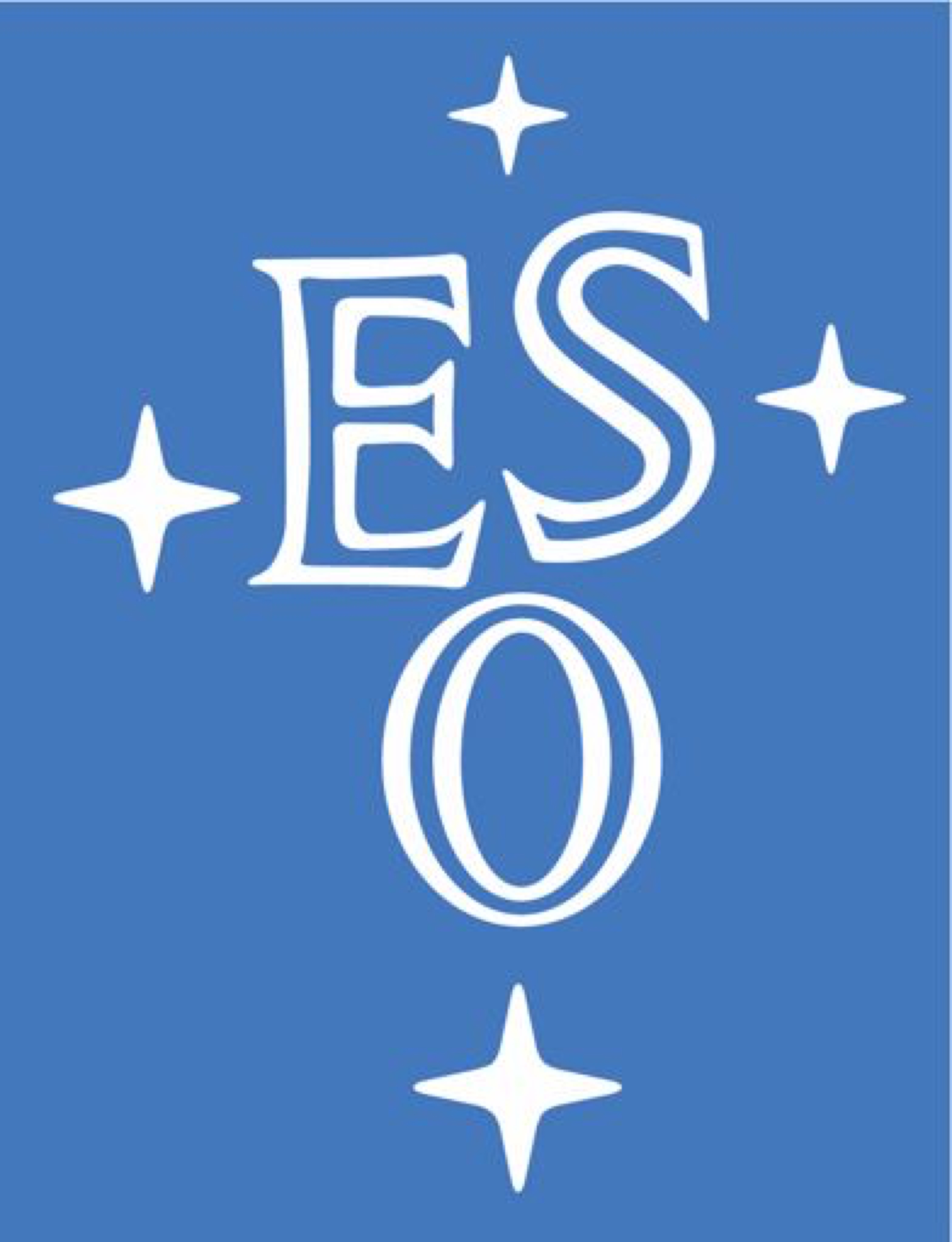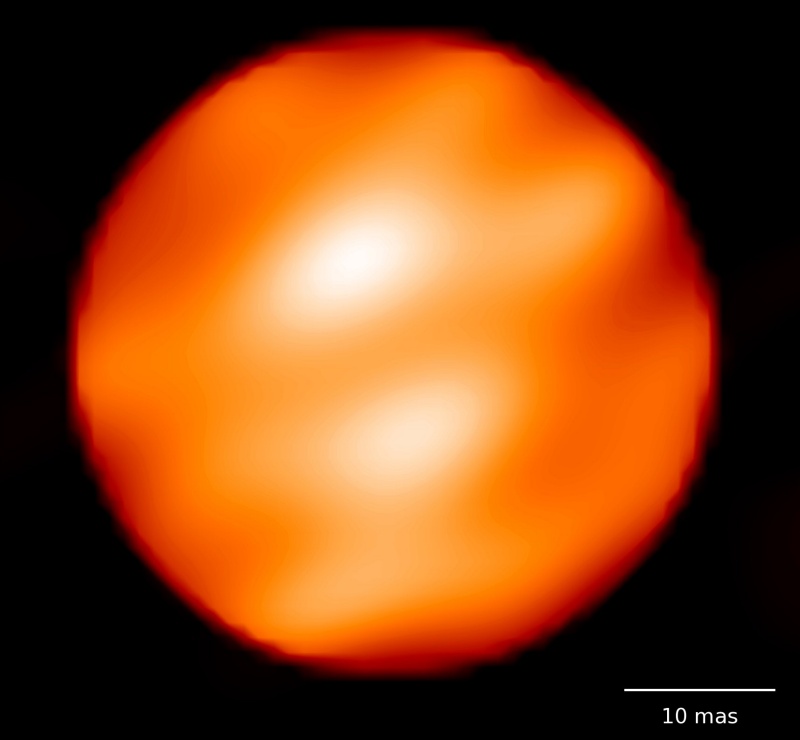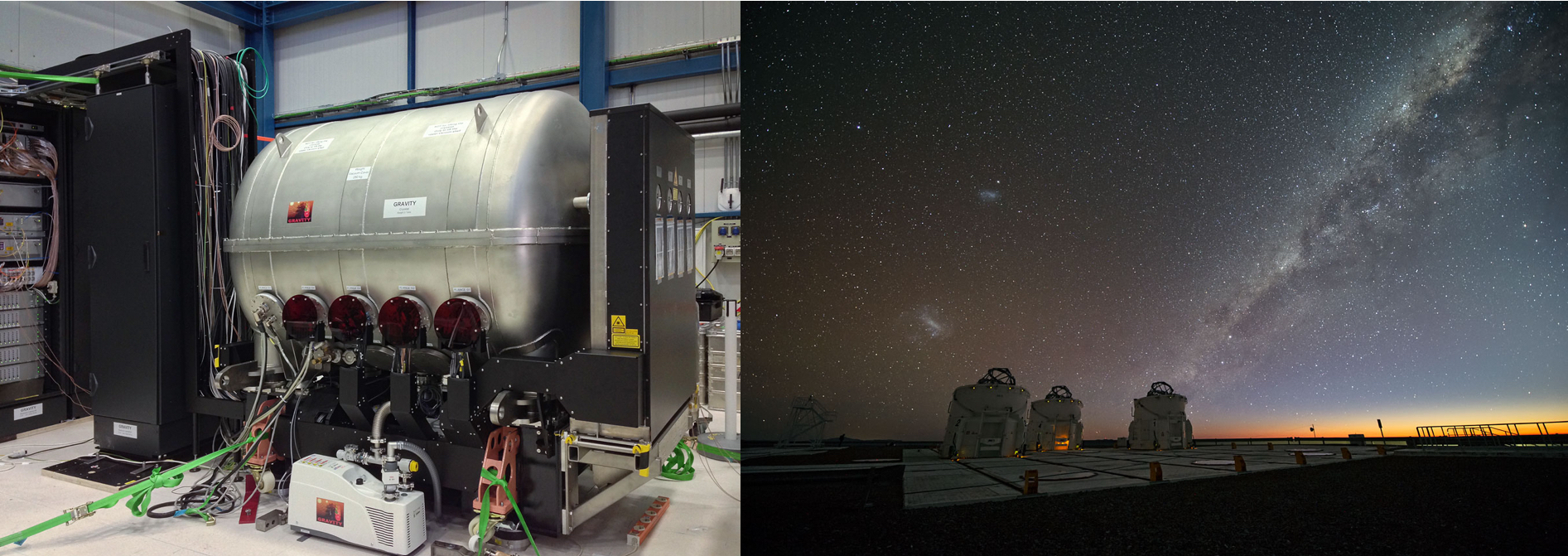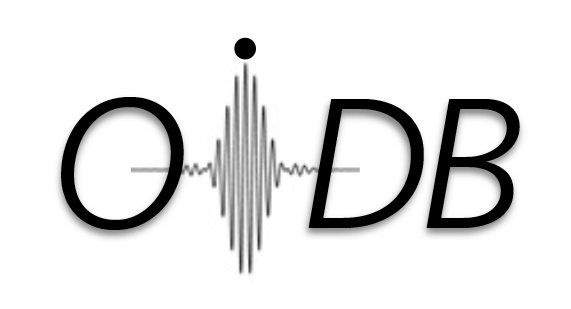
Dr. Xavier Haubois
Astronomer
at European Southern
Observatory
xhaubois at eso.org


Astronomer
at European Southern
Observatory
xhaubois at eso.org

I am a Staff Astronomer at ESO/VLTI with the position of VLTI System Scientist.
My current research focuses on evolved stars: mass loss, pulsation, convection, and dust formation. I use mostly high-resolution techniques and particularly optical interferometry. I am also involved in GRAVITY, a 4-beam optical interferometer operating in K-band.
Evolved stars are stars that are at end of their lives. The way they lose their mass determines when and how they are going to turn into Planetary Nebulae or into Supernovae for the most massive stars. This phenomenon, that also leads to the chemical enrichment of galaxies, is still to be fully understood.

Interferometric reconstructed image of the red supergiant Betelgeuse in H-band (1.65 microns). The two bright spots on the stellar surface are probably an effect due to gigantic convection cells. Assuming a distance of about 200pc, each spot has a diameter equivalent to the distance between the Sun and the Earth. From Haubois et al., 2009.
My appraoch is to observe these objects with a great spatial accuracy. I specialized in using optical interferometry instruments that deliver a spatial resolution of the order of 1-10 milli-arcseconds.This allows me to scrutinize the very surface of these objects and look for symptoms of mass loss. In red supergiants, and also in the less massive AGB stars (Asymptotic Giant Branch), convection is supposed to play an important role in lifting the material above the surface. From there, it condenses into dust that is then carried further away to the ISM (Interstellar Medium) under the action of the stellar radiation. Part of my work is to know how this happens exactly. What are the timescales and the energy involved? How does the material get transferred and transformed in the dust formation zone? These are some of the questions I'm working to answer.
GRAVITY was designed for the ambitious case of SgrA*, the supermassive black hole at the center of our galaxy. The strong technical specifications required for this object will naturally be beneficial for the other science cases of GRAVITY, and even boost the performance of the VLTI and VLT facilities. With extremely high-accuracy measurements, it will also undoubtedly bring a multitude of amazing discoveries for a wide range of objects such as evolved stars, AGNs, young stellar objets and exoplanets.

Left: the GRAVITY instrument. Right: Auxilliary Telescopes in action at ESO/VLTI (Cerro Paranal, Chile).
GRAVITY is an interferometer. It combines the light from 4 telescopes (the 4 UTs or the 4 ATs) and reach the spatial resolution of an equivalent telescope of up to ~150 m of diameter for certain directions in the sky. But more than that, GRAVITY can be seen as two interometers in one. One part of GRAVITY makes sure the light is stabilized by observing a bright star. That star can also act as a reference position in the sky. Thanks to the stabilization of the first part, the second part of the instrument observes the object we want to study with long exposure times. This is how GRAVITY can observe faint targets. I started to work on GRAVITY during my PhD thesis with end-to-end interferometric simulations. More recently, I have been working on several instrumental effects like polarization and dispersion. At ESO, I also work on the operationnal aspect of GRAVITY.
Keywords of science topics
Optical interferometry, Evolved stars, Galactic Center science, Classical Be stars
The Optical interferometric DataBase

In the last decade, optical interferometers have been producing a large amount of quality data and enlarging the resources and the modelling capabilities to fully exploit them is now mandatory. Calibration processes and varying observational conditions generally make science-ready data very precious in optical interferometry (OI). Archives are not only important for individual datasets analysis but also because they are extremely valuable to understand these objects on a long temporal baseline. It is thus fundamental to capitalise these efforts made to obtain science-ready data and make them accessible to a larger community. This goal can only be achieved by facilitating access to reduced archives and by providing user-friendly analysis software. I therefore joined The Jean Marie Mariotti Center (JMMC) to be the scientific leader of a new database service that aims at preserving, centralising and diffusing OI data on top of allowing data-discovery and analysis within the Virtual Observatory (VO) framework. The main interest for the users is to get OI data as well as observation reports obtained with a wide range of OI instruments. This service is also meant to represent a starting point for collaborations between users and data providers. In this document, we present the key-features of the current database prototype.

Banner that summarizes the updated content of OiDB .
ESO /Vitacura
Alonso de Córdova 3107
Vitacura, Casilla 19001
Santiago de Chile / Chilie
+56 2 2463 3055
email: xhaubois – at – eso.org